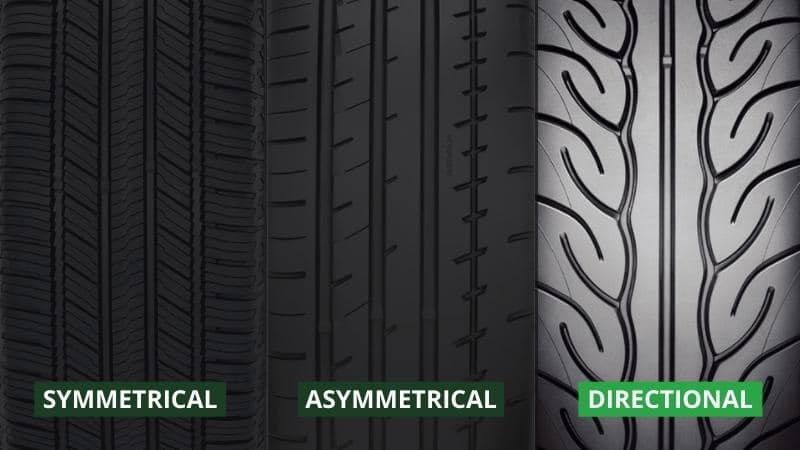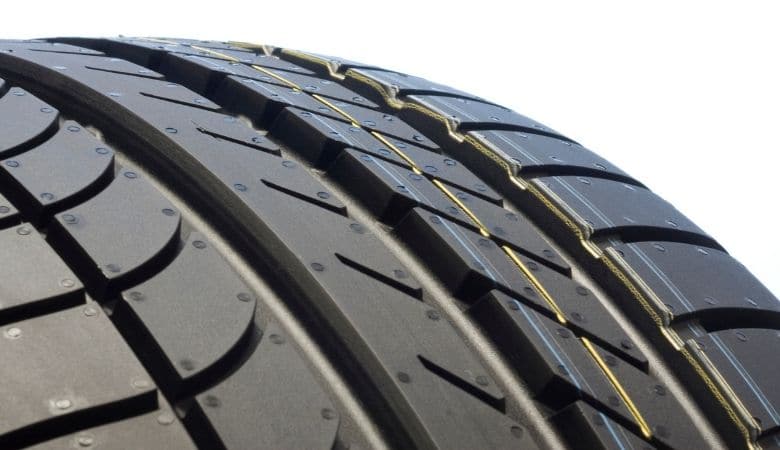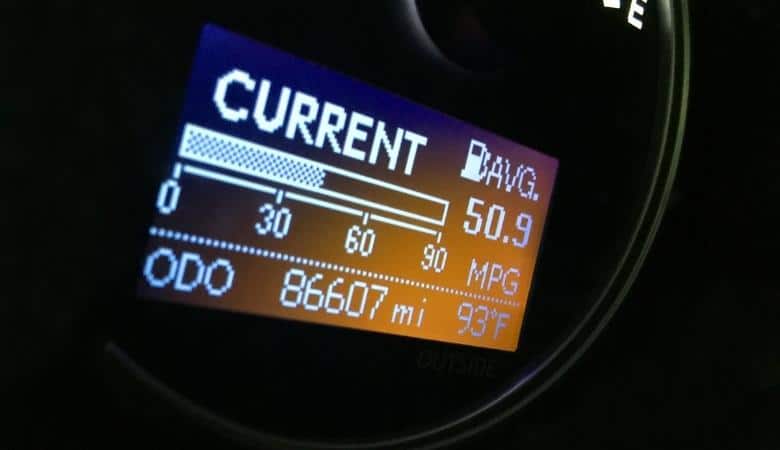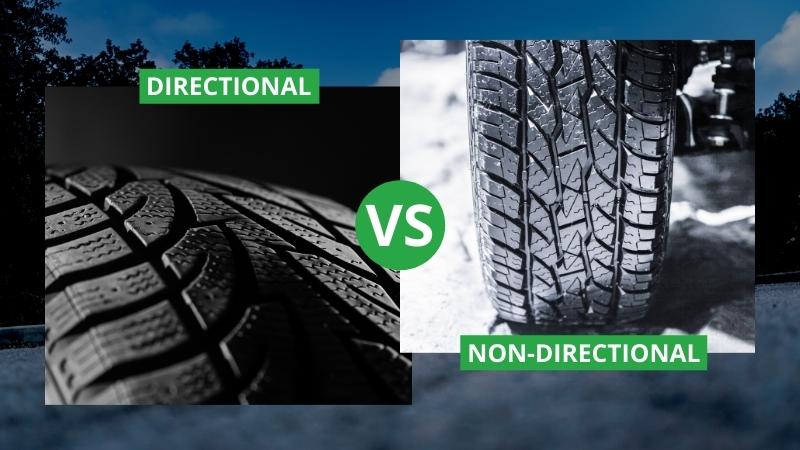Are you looking for new tires? Perhaps you came across the words directional and non-directional?
And now you are wondering which tires you should get for your vehicle.
Well, you’ve come to the right place. In this post I’ll explain what directional and non-directional tires are, their pros and cons, differences and which you should choose. Along with multiple other answers to common questions people have about these two tire types.
Let’s get to it.
What Are Directional Tires?

Directional tires, also known as unidirectional tires, are designed to only rotate in a specified direction.
If you take a keen look at tires head-on, the channels on the tread and the lateral voids all point down and forward.
The channels on both sides of the tread appear like two waterfalls coming from opposite directions and joining together.
These tires are best for traveling at high speeds compared to other tire models, such as non-directional tires.
Directional tires channel water away effectively for better aquaplaning resistance and offer excellent performance on dry surfaces.
What Are Non-Directional Tires?

Also known as symmetrical or asymmetrical tires, these tires are designed with an even number of plies. The plies run across the tire from one side to another at equal angles.
Additionally, the treads have an arrow-shaped design though they can be square or round.
Non-directional tires can be mounted either way without considering which side is up or down. These tires last longer than directional as they feature thick tread and symmetrical design.
They can work best on rear-wheel vehicles, which have limited-slip systems and front-wheel-drive cars.
Directional Tires Pros
Safety
Directional tires are designed to work in all weather conditions since they are made for the purpose of performance.
The treads push the water out of the tires when the surface is wet. This will enable your car to have steady traction and reduce the chances of hydroplaning or slipping.
Handling
Even if you don’t work with a large amount of snow or rain, directional tires offer maximum handling on dry pavements.
Most professional drivers’ cars and race cars use this type of tire as they offer a professional-grade driving experience.
Also, you can still rely on your vehicle tires to maintain stability and control on the road at high speeds.
Fuel Efficiency

Due to improved handling and traction, directional tires increase your vehicle’s fuel efficiency.
Also, you will experience less rolling resistance due to their design and need less force to speed up out of a traffic light or a turn.
The force may be insignificant, but it will make a considerable fuel consumption, however small it is.
Superior Wet Traction
The main advantage of directional tires is their excellent resistance to hydroplaning. This advantage is realized by using a V-shaped tread design that channels water out of the center rib.
Aesthetics
Most automotive fanatics are gotten from directional tires for aesthetic motives. These tires are more aggressive in their tread design than mom-directional tires.
Directional Tires Cons
- Have less resistance to wear
- Noisy when compared to non-directional
- They cannot be rotated to many positions on the car
- The rubber compounds used are expensive compared to standard tires
- Shorter tread life
Popular Directional Tires
Popular summer directional tires
Popular winter directional tires
Non-Directional Tires Pros
Tread Wear
When it comes to tread design, non-directional tires stand out to be the best. Since the tires can be swapped (Rotated) to different sides of the car, uneven tread wear is easier to correct, extending their life.
Long-Lasting Tires
Non-directional tires have tread patterns that can be rotated in many different ways. This substantially increases the life of the tire.
Quiet

Non-directional tires provide the pleasant driving smoothness that most drivers like. Additionally, these tires are not noisy as compared to directional tires.
Good Value for Money
Non-directional tires are cheaper to buy compared to other models such as non-directional. They are the common tires on city cars.
Easy to Fit
Non-directional tires can be rotated either way round and can be fitted more easily than directional tires.
Non-Directional Tires Cons
- Not best for high performance or race cars
- Not as technically sophisticated as directional tires
- Not fit for wet conditions like other tread patterns
Popular Non-Directional Tires
Popular summer non-directional tires
Popular winter non-directional tires
What’s The Difference Between Directional and Non-Directional Tires?
- A directional tire is a tire that is designed to rotate in only one direction while non-directional tires are engineered to roll in either direction providing equal performance in all road conditions.
- Directional tires are identified by an arrow sign on the sidewall, while non-directional tires are identified only as they do not have such marking.
Why Choose One Instead of the Other?
Both directional and non-directional tires are good for different applications. Therefore, it is up to you to select depending on the climate you live in and your driving habits.
However, customer reviews show that unidirectional tires are the best choice as they have treads that utilize directional tires’ v-pattern to direct water out. They also provide the best dry ground traction.
Can You Mix Directional Tires With Non-Directional Tires?
Yes, but they should be on the same side, either front or back. Best would be to have the non-directional tires on the front as they rotate in both directions. A misplaced directional tire should be corrected as early as possible as that would compromise the tire’s performance.
Do Directional Tires Wear Faster?
While non-directional tires do not need a given direction after installation, mounting directional tires improperly will reduce the benefits of the tire and cause them to wear out faster than the average period recommended by the manufacturer.
Are Directional Tires Noisy?
As they wear out, directional tires often get louder than non-directional tires. When tires wear unevenly they are more noisy to the extent of vibrating the steering wheel. Proper tire alignment and wheel rotation are the best solutions to such problems in directional tires.
What Happens if You Run Directional Tires Backward?
Directional tires are designed to rotate in one direction. Therefore, if you reverse the direction, the tire’s wet grip will suffer, lose the cornering grip, and the braking distance will increase.
How do I Check if The Tires on my Vehicle Are Directional or Non-Directional?
Directional tires are designed with a mark on the sidewall. The word Direction or Rotation is written here. Adjacent to the mark is a small arrow indicating the tire’s rolling direction. However, non-directional tires do not have any marks. Therefore, any tire without a mark is a non-directional tire.
How Do You Rotate Non-Directional Tires?
Since non-directional tires work in all directions, you can rotate the wheels from the back to the front and vice versa. When done correctly, this kind of pattern may increase the tire’s life, as all the treads are equally used. Honestly, non-directional tires are the favorite to many due to their extended lifespan.
Are Nitto Ridge Grapplers Directional?
The Nitto Ridge grappler tire has a variable pitch tread pattern, central lateral Z grooves, and altering shoulder grooves that disqualify it from directional tires. Otherwise, it is a non-directional tire. The Nitro Ridge Grappler is the best fit for a driver who wishes to have an aggressive-looking tire.
Are SunF ATV Tires Directional?
No. the SunF ATV tires are not directional tires but non-directional. Both have tread in the same direction regardless of how you place the tire. This means you install these tires in either way. Also, this makes them best for a smoother ride on flat surfaces and rocky terrains.
Final Words
Though tire choice varies from one driver to another depending on different preferences, ensure you have a tire that won’t make your riding experience hard.
Therefore, looking at the pros and cons of these two models, it is clear that non-directional tires would be a good fit.
However, non-directional tires can work best for you if the price is your end goal. Therefore, I would advise you to read in between the lines and choose the model that will work easier for you.
Hi, my name is Niklas, the head content creator & CEO of Whirling Wheelz. I am very interested in vehicles of all kinds, mainly cars. I have a car mechanics degree from high school and a big hobby of mine is to follow the WRC (World Rally Championship) both online and through travel.


